Archaeological Museum of Thera
Archaeological Museum of Thera |
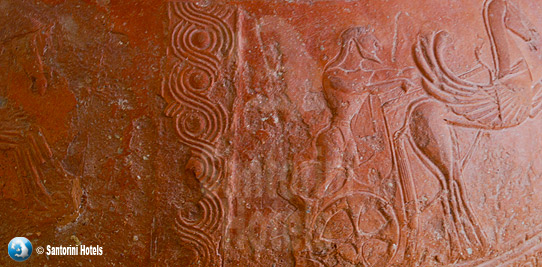 |
|
The first Archaeological Museum of Thera was founded in the beginning of the 20th century, in order to house the rich finds that were discovered during the excavations in ancient Thera since 1896. The first museum building got destroyed in the 1956 earthquake and was replaced in the 1960s by the building that houses the collection till today. The largest part of the collection comes from the excavations in the area of ancient Thera, which was the only urban center of the island from the 9th century BC, when Spartans settled there, until the prevalence of Christianity. Along with Delos, they are the most excavated areas of the Aegean.
Note: Click on each small image on this page for larger view
|
Archaeological Museum Of Thera
Discover the treasures of Ancient Thera
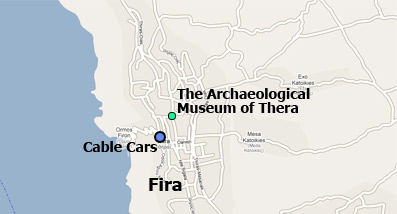 |
General Information
Address:
The Archaeological Museum of Thera
Fira Santorini 847 00 Greece
Tel: +30 22860 22217
Open: 8.30 - 15.00 (Monday closed)
Price: 2 €
|
|
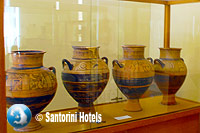
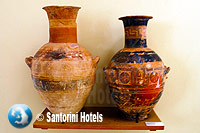
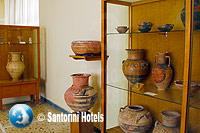
|
|
The exhibition is in a large, L-shaped room, where the finds from 8th century BC until 4th century BC are displayed in chronological order. In the show cases, the development of pottery in Thera unfolds. The most important statues are also found scattered in the same room.
In the first part, the visitor can see some protocycladic marble figurines (3rd millennium BC) and prehistoric vases from Akrotiri (20th-17th century BC) and all the pottery of Geometric and Archaic years that comes from the early cemetery of ancient Thera. In the showcases, you can see vases -mainly amphorae- with geometric decoration from the "Theran workshop". The characteristics are the broad rim and the wide neck. The geometric shapes are performed with great accuracy. The continuance of this decoration until the 7th century BC, when in the rest of Greece it had already been replaced by oriental style patterns, is one of the elements of the "Theran workshop". Besides the pure geometrical shapes, you will also see plants and birds, whereas on the posterior vases, a rose in the middle of the frieze is a usual pattern.
|
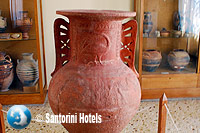
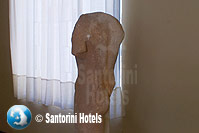
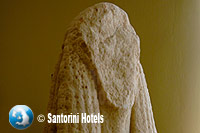
|
|
The big relief pithos of archaic period that is on display in the center of the room is of great importance. It is the only one of this kind that has been discovered in Thera. On the neck, a swan is depicted, whereas chariots with jockeys pulled by winged horses are depicted on the main body.
The marble bodies of kouroi belong to the same period - 7th century BC. Their original height must have been more than two meters and they probably were used as grave signs, since they were discovered in the cemetery of ancient Thera. Their coiffure reminds of Egyptian statues. They are representative samples of the daedalic sculpture. Researchers believe they were made in Naxos.
|
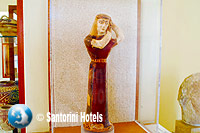
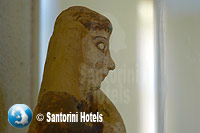
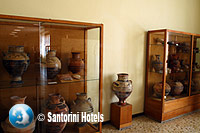
|
|
Another important find of the same period is a clay female figurine whose hands movement suggests she is a mourner. Her body, her face and her coiffure remind of Egyptian art. The color is excellently preserved, even on the details of her face; this is very rare for clay figurines.
Ceramic finds of the 6th century BC are also on display, including the black figure vases that were discovered in the Cemetery of ancient Thera and come from Attica. One of them has the name of the dead person it was addressed to written on the rim. On the one side, it displays Athena and Hercules riding a four-horse chariot, whereas Apollo and Artemis are also noticed. On another vase, a chariot battle is depicted on the exterior part, whereas on the interior part, six ships surround Poseidon while winning the giant Polyvotis.
The Archaelogical museum is not very big, but some of its exhibits are really interesting and it is worth a visit.
|